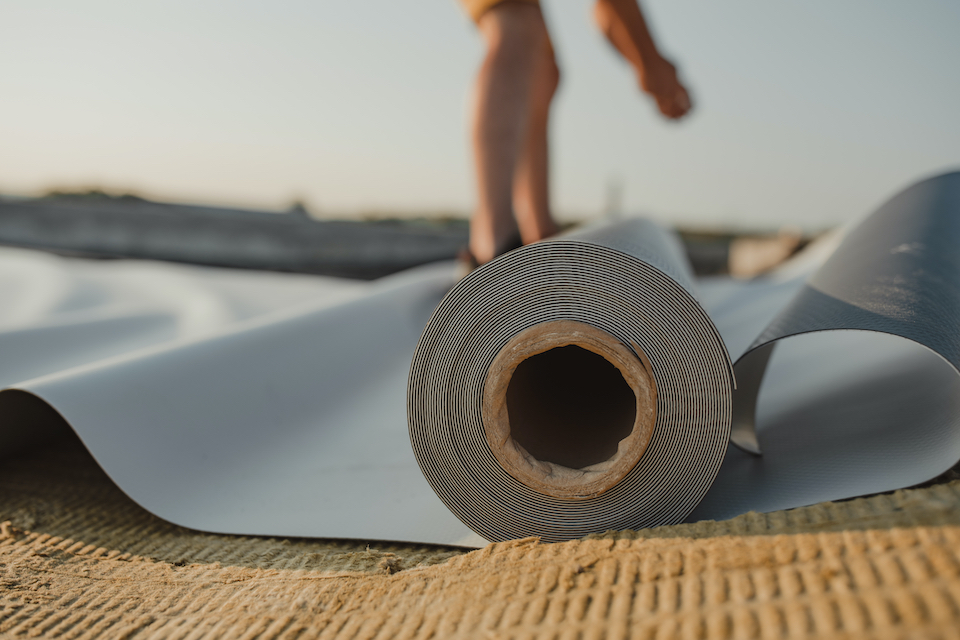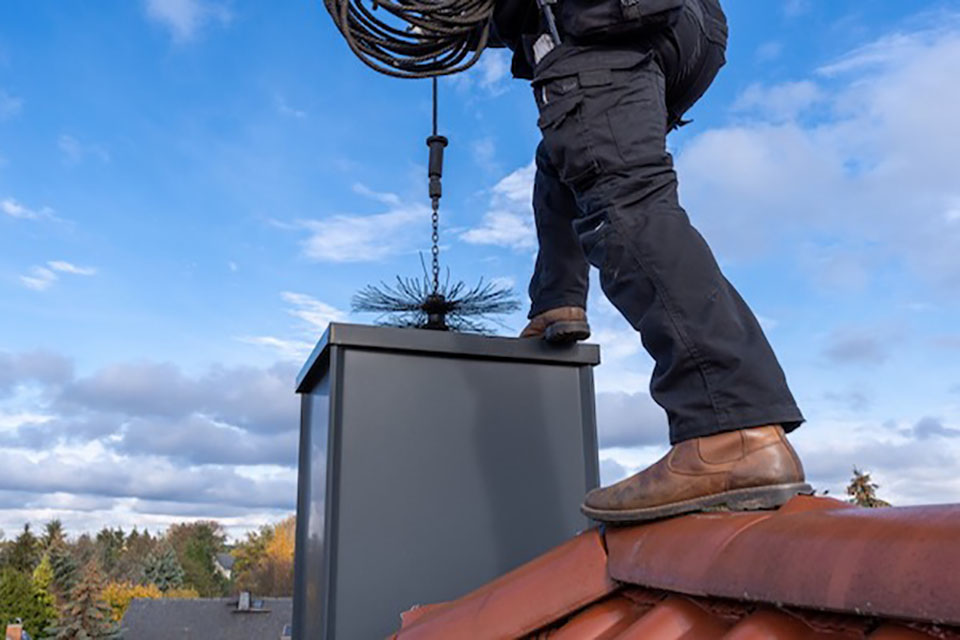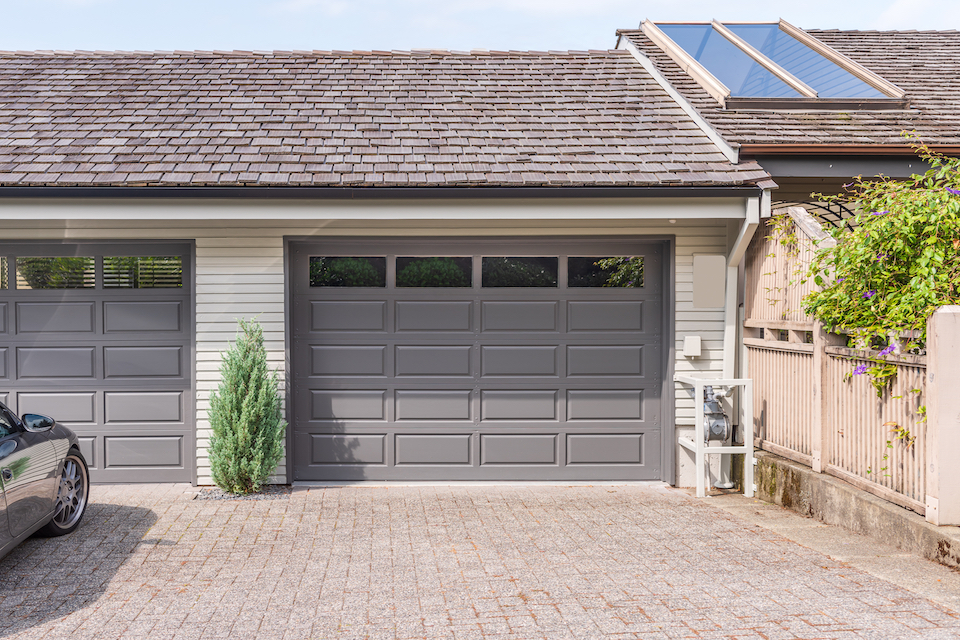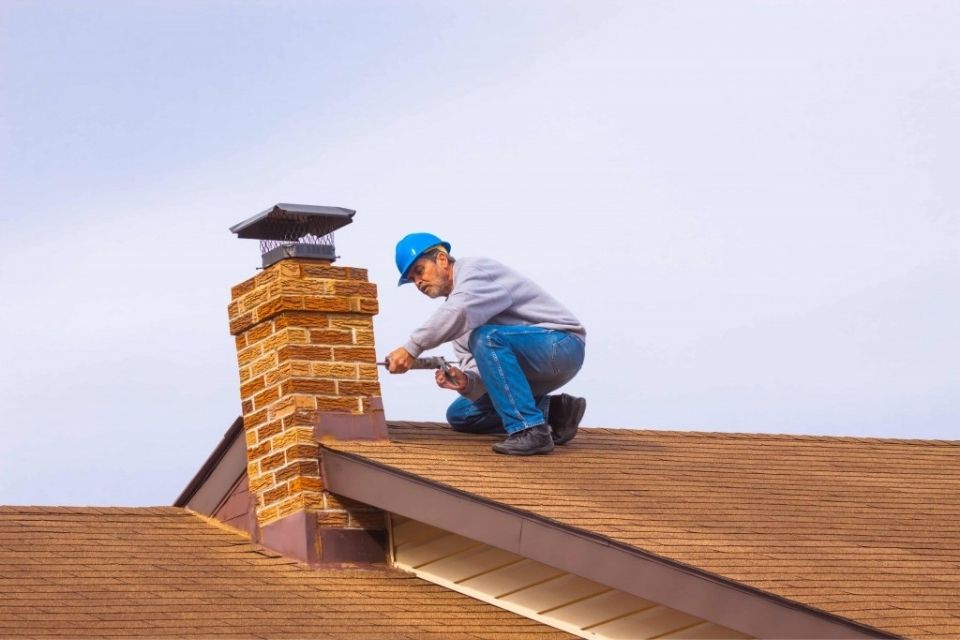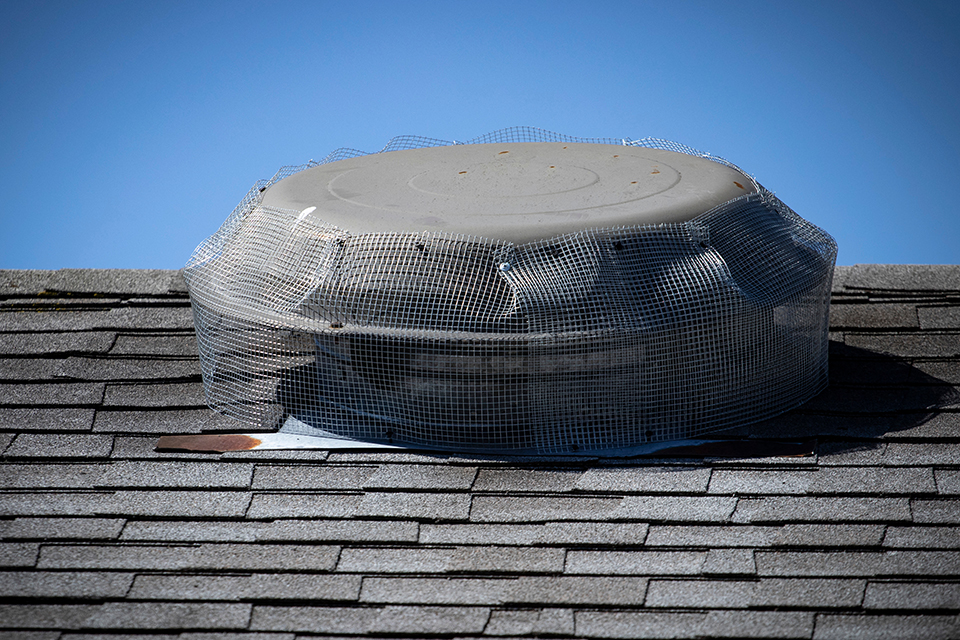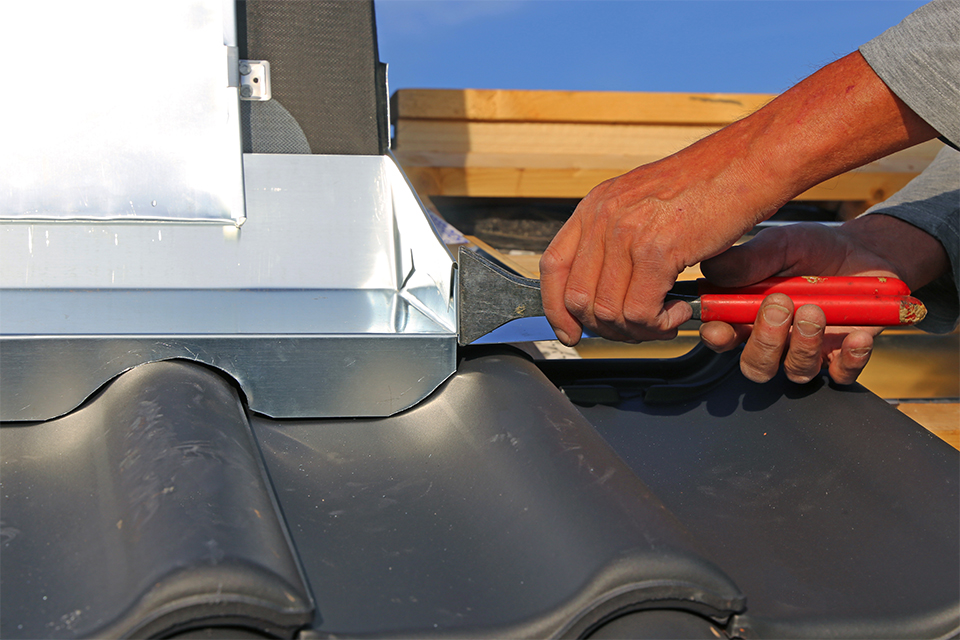How Much Does Rubber Roofing Cost?
Rubber or EPDM roofing is a single-ply rubber membrane that is around 50mm thick. This type of roofing is usually used on flat roofs.
Rubber roofs are usually black; however, you can have some pigments added to the roof to make it lighter if you would prefer a lighter look.
Why you should consider a rubber roof?
Rubber roofs are very lightweight and easy to fit. They are also very good at keeping a roof watertight.
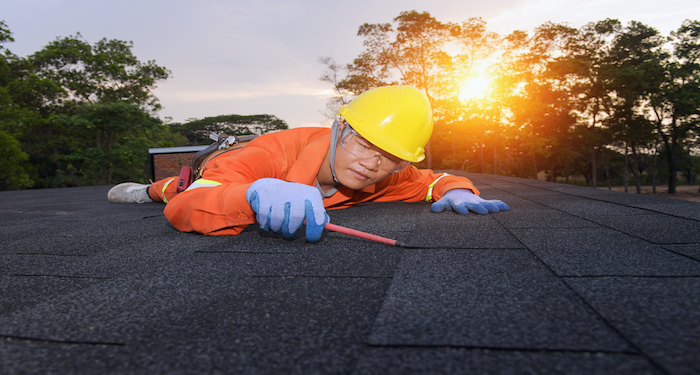
Let's take a look at the cost factors involved...
The average cost to install a rubber roof will depend on several factors, including the size of the roof, the quality of the material, and the location of your property.
On average, you can expect to pay around £10-£15 per square metre for a rubber roof.
Rubber Roof Price List
Below is a table showing the typical costs that you can expect for various rubber roof installation jobs:
| Job Description | Average Cost |
|---|---|
| Single garage rubber roof installation | £1,000-£1,500 |
| Double garage rubber roof installation | £1,500-£2,000 |
| 2-storey extension rubber rood installation | £1,500-£2,500 |
Supply Cost of a Rubber Roof
If you are planning to install a rubber roof, you may be interested to know how much the supplies will cost. The supplies you need will include the roofing material itself, the rubber membrane, and any insulation that you choose to install.
Below is a table showing the supply costs that you can expect with this type of work:
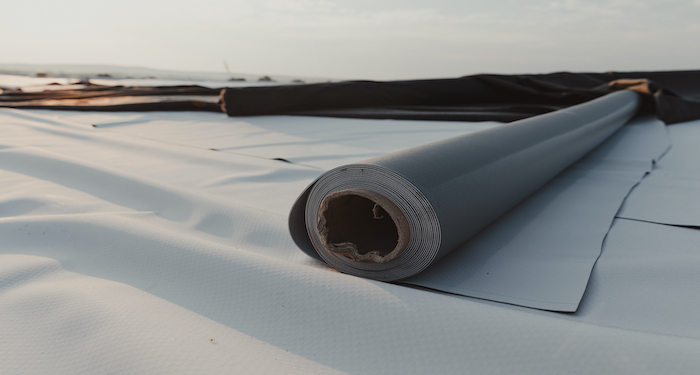
| Type of Supply | Average Cost |
|---|---|
| Rubber roofing rolls cost | £10-£15 per square metre |
| EPDM rubber roofing cost | £60-£90 per square metre |
| Fibreglass insulation cost | £10-£15 per square metre |
| PIR insulation boards cost | £10-£18 per square metre |
| Spray foam insulation cost | £35-£70 per square metre |
| Adhesive and sealant cost | £50-£80 |
Additional Rubber Roof Installation Costs
There are several additional costs that you may need to think about when it comes to installing a rubber roof, such as:
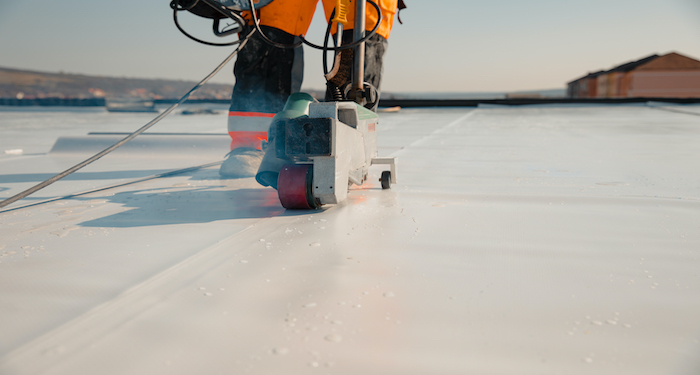
Scaffolding Costs
When installing a new rubber roof, you will most likely need to hire scaffolding for the work to be completed. Some contractors may bring their own scaffolding and include the costs in the overall quote. However, in some cases, you may need to pay for the scaffolding separately.
The average cost of having a scaffold tower assembled is around £200-£300.
Guttering Costs
When you install a new roof, you may also want to think about installing new guttering, especially if it has been a while since your gutters have been replaced. This can improve the look of your home and can also help to provide adequate drainage and prevent any potential leaks.
The average cost of installing guttering is around £30-£60 per metre.
Insulation Installation
Many rubber roofing systems either require or significantly benefit from the addition of rigid insulation boards beneath the rubber membrane. This could be an added extra that is not included in your original quote.
Adding insulation boards can increase the R-value of the roof, helping to reduce heat loss in winter and keep buildings cooler in summer. This could mean lower energy bills and a more comfortable indoor environments.
This is especially important if your new rubber roof is installed over an extension or garage conversion.
Soffits and Fascias Costs
Similarly, you may also want to replace the soffits and fascias on your home to further improve the look of your home. Replacing all of your fascias and soffits at once will ensure they all match.
The average cost of replacing fascias and soffits is around £1,000-£4,600. The overall cost will depend on the size of your home and the quality of the materials.
Roof Decking Repairs
Roof decking is the structural surface that supports the roofing materials. If this base layer is rotted, warped or cracked, you may need to get this repaired or replaced before your new roof can be installed.
Without these repairs, the new rubber membrane could have a number of issues including:
- Bubbling
- Wrinkling
- Premature Tearing
- Potential leaks
- Water Pooling
Roof deck repairs are a critical pre-installation step. Although it maybe a an additional cost now, it will help prevent issues down the road.
Labour Cost to Install a New Rubber Roof
Most of the time, your contractors will include the cost of both the materials and the labour costs in your quote. However, if you are interested in purchasing your roofing materials separately, then you may be interested in finding out the costs of the labour alone.
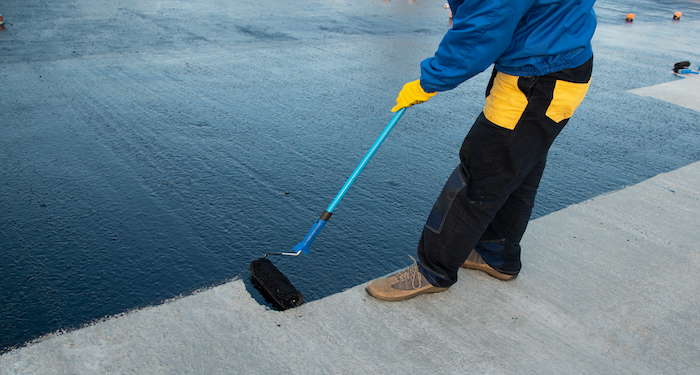
An individual roofer will usually charge around £20-£35 per hour; however, this will depend on the difficulty of the job and your location in the UK. Those based in the London area can expect to pay more for the cost of labour than those based in the North or other parts of the UK.
Most of the time, you can expect roofers to work in pairs. If this is the case, then you can expect to pay around £200-£300 per day for the work.
How Long Does It Take to Install a Rubber Roof?
You may also be curious about how long the work may take to complete. This will usually depend on:
- Size of the roof
- The materials used
- Number of contractors working on the job.
Here are some examples of rubber roof timings based on the most common installation types:
- Single garage - 7-8 hours
- Double garage - 1-2 days
- 2-storey extension - 2-4 days
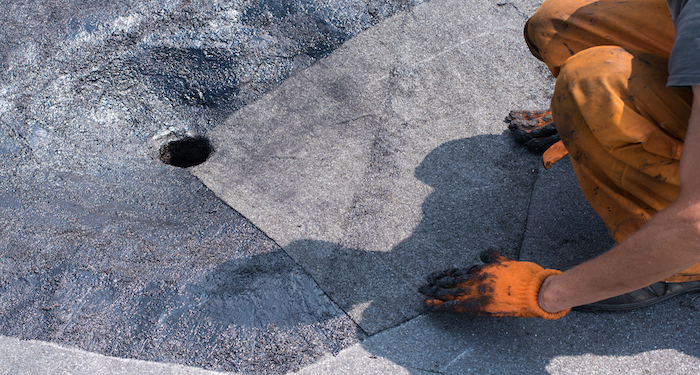
Types of Rubber Roofing
There are several types of rubber roofing materials available, each with unique benefits. The three most common types are EPDM, TPO, and PVC. Below is a detailed look at each option.
EPDM Roofing Cost
EPDM stands for Ethylene Propylene Diene Monomer. It is the most popular type of rubber roofing due to its affordability, longevity, and ease of installation. With proper maintenance, EPDM roofs can last 25 to 30 years or more.
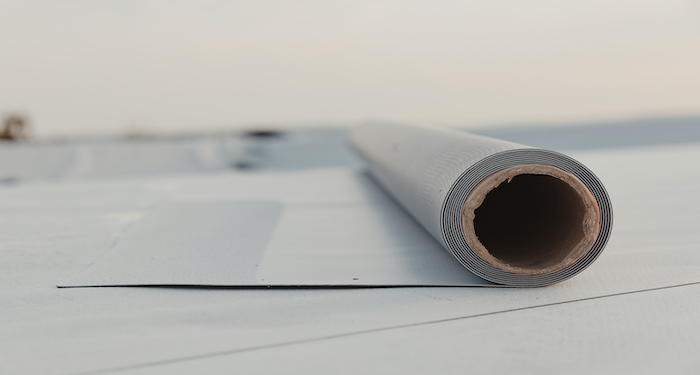
EPDM is typically available in black or white rolls and can be installed using adhesive, mechanical fasteners, or ballasting methods.
Pros
- EPDM has a very long lifespan
- This material has been used for many years
- It comes at a lower cost than most other roof types
Cons
- Absorbs heat
- Offers less heat protection
- Often sealed with adhesive or tape so can be prone to leaks
TPO Roofing Cost
TPO, or Thermoplastic Olefin, is a newer type of rubber roofing that offers strong resistance to UV rays and punctures. It is known for its white reflective surface that helps reduce energy costs.
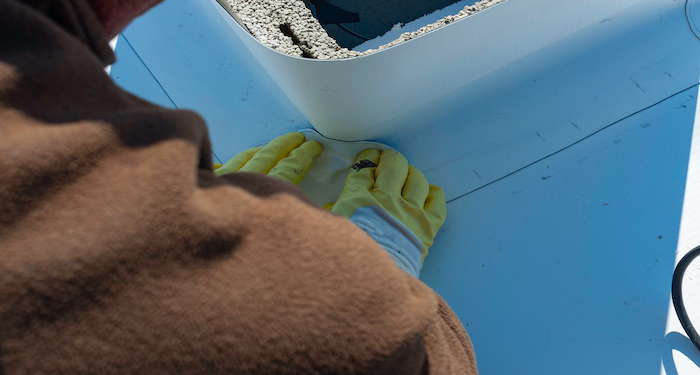
Thanks to its smooth, non-porous surface, TPO roofing naturally resists the accumulation of dirt, algae, and mould. This not only keeps the roof looking cleaner for longer but also reduces the need for frequent maintenance and chemical cleaning treatments, extending the roof’s lifespan and lowering upkeep costs.
Pros
- Durable and flexible
- Environmentally friendly
- 100% recyclable
- Highly water-resistant
Cons
- New technology
- Inconsistent formula since it’s still quite new
PVC Roofing Cost
PVC stands for Polyvinyl Chloride. Like TPO, PVC is a thermoplastic membrane, meaning it becomes flexible when heated and returns to its original state when cooled. This property allows for heat-welded seams, which create a watertight bond stronger than adhesive or taped seams.
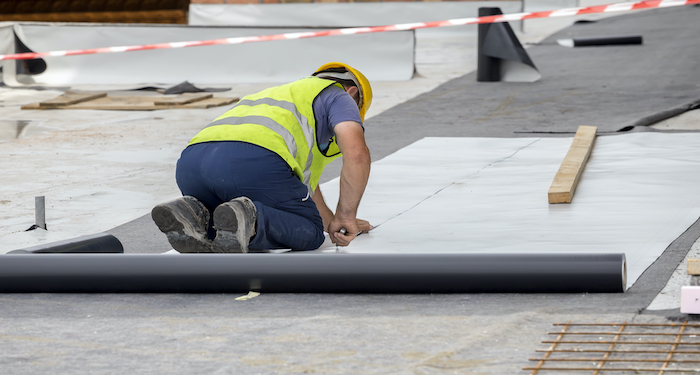
PVC roofing is valued for its excellent durability, flexibility, and resistance to moisture, chemicals, and fire. It is especially popular in commercial and industrial applications where exposure to grease, oils, or harsh chemicals may occur.
Pros
- Very flexible
- Durable
- Time-tested product
- Energy-efficient
Cons
- Prone to chemical breakdowns
- Not very environmentally-friendly
Benefits of a Rubber Roof
There are many benefits to installing a rubber roof. Below is a list of the main advantages of this type of work:
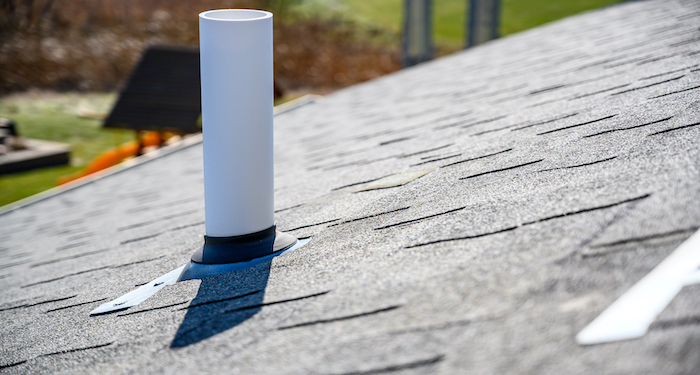
Long Lifespan
One of the most significant advantages of rubber roofing is its impressive longevity. Rubber roofs are engineered to withstand a wide range of environmental stressors, making them a durable and low-maintenance option.
On average, most rubber roofs, such as EPDM, last between 20 to 25 years, but with proper installation and routine maintenance, some can remain effective for 40 to 50 years or more. This means that installing a rubber roof is a great investment for your home.
Easy to Maintain
Rubber roofs are known for being low-maintenance, which adds to their appeal as a long-term roofing solution. Unlike traditional roofing systems that may require frequent inspections and repairs, rubber roofs typically require only minimal upkeep to remain in good condition throughout their lifespan.
Cleaning a rubber roof is a straightforward process. Most of the time, all that's needed is to sweep away loose debris such as leaves, twigs, and dirt using a soft-bristle broom or leaf blower. For more thorough cleaning, you can rinse the roof with a garden hose or use a mild detergent solution with water to remove grime or algae buildup.
Improved Kerb Appeal
Installing a new rubber roof can significantly enhance the visual appeal of your property. With their clean lines, smooth surfaces, and modern finish, rubber roofs contribute to a contemporary and minimalist aesthetic that suits a wide range of architectural styles.
Whether your home is modern, traditional, or somewhere in between, a well-installed rubber roof can create a sleek, uniform appearance that complements the overall exterior design.
Additionally, because rubber roofs resist fading, staining, and algae buildup, they maintain their appearance over time with minimal maintenance.
Easy to Install
One of the key advantages of rubber roofing is its ease of installation. Rubber roofs, especially single-ply systems like EPDM, are lightweight and come in large rolls or sheets, which makes the installation process quicker and less labour-intensive compared to traditional materials like tiles or shingles.
Another benefit is that rubber roofs can often be installed over existing roofing in some cases (depending on local regulations), which saves time and reduces labour costs associated with tearing off the old material.
How Much Does It Cost to Remove a Rubber Roof?
There are some cases when you may want to remove a rubber roof. For example, if you are having a new roof installed, or if you are demolishing the part of the building that houses the rubber roof.
In some cases, you may be able to remove a rubber roof yourself as a DIY job. However, it is usually best to leave this job to professionals who have the skills needed to remove your rubber roof safely.
The average cost to hire a professional to remove your rubber roof is around £70-£90 per square metre. However, this will depend on the materials, the ease of access, and the difficulty of the job. In most cases, this is a job that can be completed within a day.
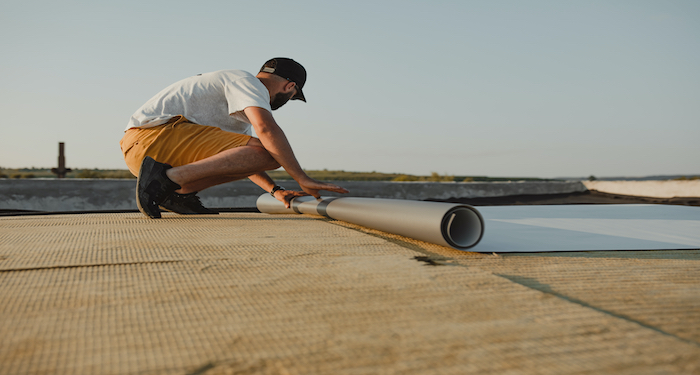
You may also need to consider the costs of waste removal. This will usually be around £100 if a tradesperson is removing the waste for you. However, if you need to hire a skip for the waste, then you can expect to pay around £60-£450. This price will depend on the size of the skip needed and the duration of the skip hire.
FAQs
Q: How long does a rubber roof last?
A: On average, you can expect a rubber roof to last between 20 to 25 years under normal conditions.
The actual lifespan depends on several factors, including the type of rubber, quality of the installation, harsh weather conditions and how well the roof is maintained.
For example, EPDM roofs are especially known for their longevity and resistance to UV rays, while PVC and TPO may offer slightly shorter lifespans but better energy efficiency or chemical resistance.
However, with proper installation, regular maintenance, and occasional repairs, some rubber roofing systems can last up to 30 to 50 years or more.
Q: Can I walk on rubber roofing?
A: Yes, in most cases, you can safely walk on rubber roofing, especially durable types like EPDM, when needed for routine maintenance, inspections, or minor repairs.
Rubber roofing membranes are designed to be flexible and resilient, and they can typically withstand foot traffic without damage, provided the roof is in good condition and the surface is clean and dry.
Q: What is a liquid rubber roof?
A: Liquid polyurethane is commonly known as liquid rubber. This offers a long-lasting and flexible solution to rubber roofing. It is ideal for many roof types and can be used in a range of instances.
For example, liquid rubber can be used to cover concrete roofs, line guttering, and provide a waterproof membrane. Liquid rubber can also provide a solution to repair roofs quickly.
Q: How long does it take to replace a flat rubber roof?
A: This will depend on the size of the roof, the ease of access, the height, and the materials used. However, on average, a single garage repair and replacement should take around one day to complete if there are two tradespeople working on the job. A double garage will usually take around 2-3 days to repair and replace.
When a new rubber roof is installed, the contractor should always come back the next day to ensure the flat roof remains watertight overnight.
Roofs that are unusually shaped or require a lot of cutting around pipes or roof windows will take longer to complete. A flat roof on a second storey or third storey will also take longer to complete, as this will also require scaffolding. Erecting scaffolding can take up a lot of extra time.
Q: Can a flat roof be repaired?
A: Yes, in most cases, a flat roof can be repaired. Repairs on flat roofs tend to be quite easy as long as the damage is minor. If the damage is major, then you may need to replace the roof entirely.
When it comes to small leaks, holes, blisters, or flashing damage, these tend to be quite easy to repair. You will simply need to remove all debris and leaves from the roof, clean the affected area, and then patch up or apply new material to the damaged area.
Q: How do I maintain a rubber roof?
You won’t usually need to do much maintenance on a rubber roof other than removing leaves and other debris occasionally. You should inspect your rubber roof once per year to ensure there is no visible damage and to make sure there are no leaks.

